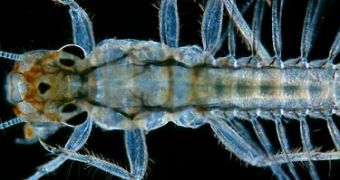Insects have muscles that can execute one of the fastest movements: wings moved at an astonishing frequency of 1,000 Hz is one example. This means that they need quick access to oxygen for such fast burning. New imaging technologies could solve a physiological paradox in this equation: how their respiratory system, made up to provide rapid and easy access to oxygen, can survive for days without breathing.
"The insect respiratory system is so efficient that resting insects stop taking in air as they release carbon dioxide", said Stefan K. Hetz of Humboldt University in Berlin, Germany.
Their respiratory system can provide too much oxygen, which is toxic, producing oxidative damage to the insect's tissues, like in humans. Insects inhale and exhale air through body holes (on each segment of their thorax and abdomen) named spiracles and the oxygen goes through a system of decreasing tubes (tracheae) that transport oxygen directly to tissues and muscles.
This type of respiratory system is much more efficient than the vertebrates system at insect scale (this system also stops them from growing larger, that's why the insects are tiny): at the same proportion, insects get more oxygen than mammals as oxygen gets directly to the tissues, while vertebrates must transport it through the blood employing transporter molecules (hemoglobins).
The spiracles can be opened and closed as needed and can take a large store of oxygen at once, allowing the insects to live for long without breathing.
"Insects are able to survive hypoxic environments. They can shut down and survive for hours or days. They have a low metabolic rate and can close their spiracles. If you compare Lance Armstrong, the bee and the hummingbird, the bee is the champion of oxygen delivery," explained Dr. Scott Kirkton of Union College, Schenectady, New York.
The synchrotron x-rays have recently allowed researchers to see how living insects breathe, while genetics reveals the genes that control breathing.
Gabriel Haddad, of the University of California, San Diego, investigating fruit fly's ability to survive periods of hypoxia (low oxygen), is interested in how the genes are involved in the ability of its neurons to resist oxygen lack: in humans, hypoxia due to medical emergency or accidents can lead to massive deaths in brain nuclei and subsequent severe conditions. The team led by Mark Krasnow, of the Stanford University School of Medicine, Palo Alto, California, has detected over 50 genes controlling various aspects of insect respiratory development and has also investigated how oxygen-starved cells behave in developing airways, with the goal of understanding more about human lung diseases and how to reactivate lung development to restore diseased tissue.
The research made by Jake Socha, Argonne National Laboratory, Chicago, and the University of Chicago, by employing synchrotron x-rays, revealed that insects autoventilate their respiratory system employing wings or legs to pump air through the body, abdominal muscular pumping and tracheal compression (to push oxygen to the head and thorax).

 14 DAY TRIAL //
14 DAY TRIAL //